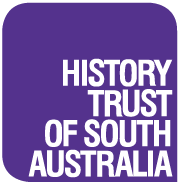On 12 April, members of the Naracoorte Branch of the National Trust who run The Sheep’s Back Museum undertook a one day Disaster Preparedness & Response workshop. It was an opportunity for the group to learn what to do if disaster struck and their museum was flooded or underwent water damage after a fire. And it was also to help them write that all important document that is often overlooked until it is too late – the Disaster Preparedness Plan.
The workshop was taken by Preventative Conservator, Anne Dineen from Artlab Australia who travelled down to the southeast with History SA’s Community History Officer Pauline Cockrill. The morning consisted of theory in the classroom, and quite literally the classroom, as it took place in the former Kybybolite School which is on the museum’s premises. Anne gave a Power point presentation and the group learnt about a number of serious disasters in museums and archives around the world caused by fire, flood and accidents by visitors and contractors on site. There was plenty of time for discussion and to go through Anne’s excellent notes and template for creating a Disaster Preparedness Plan.
After lunch it was time for the ‘hands-on’ session and the group moved to the Work Shed which had been laid out as a salvage area, to practice the various ways of retrieving waterlogged items and how to dry them with the least amount of damage possible. Several objects made of a variety of materials had been soaked earlier in water-filled plastic tubs. These included many typical items that one might have to save – photographs, books, documents, CDs, as well as artefacts representing different materials – paper, plastic, leather, metal, textiles and ceramic.
Anne demonstrated how to use the important equipment necessary to have in one’s Disaster Bin/Store such as rolls of paper towel, Glad Bake, Rag on a Roll (ROAR), blotting paper, Reemay (a spun polyester fabric), plastic sheeting, clothes line and pegs, and electric fans. Everyone had the opportunity to try out interleaving soaked books with paper towel ready to air dry them in a simple wind tunnel which Anne created with chairs, plastic sheeting and an electric fan. There was also a chance to encase a book using Glad Bake ready for freezing and to peg out damp documents, photos and negatives on a clothes line.
Anne finished by demonstrating ways of air drying different waterlogged items such as a leather shoe and a child’s dress. Photographs of the workshop can be seen here.
The workshop was funded by a grant through History SA’s Community Museums Program. The 2012-13 grant round will be open on 30 July.
Do you have a Disaster Preparedness Plan? Accredited and registered museums in the program might want to consider applying for a grant for a similar workshop to ensure you are disaster ready. Contact us if you would like to discuss this further.

